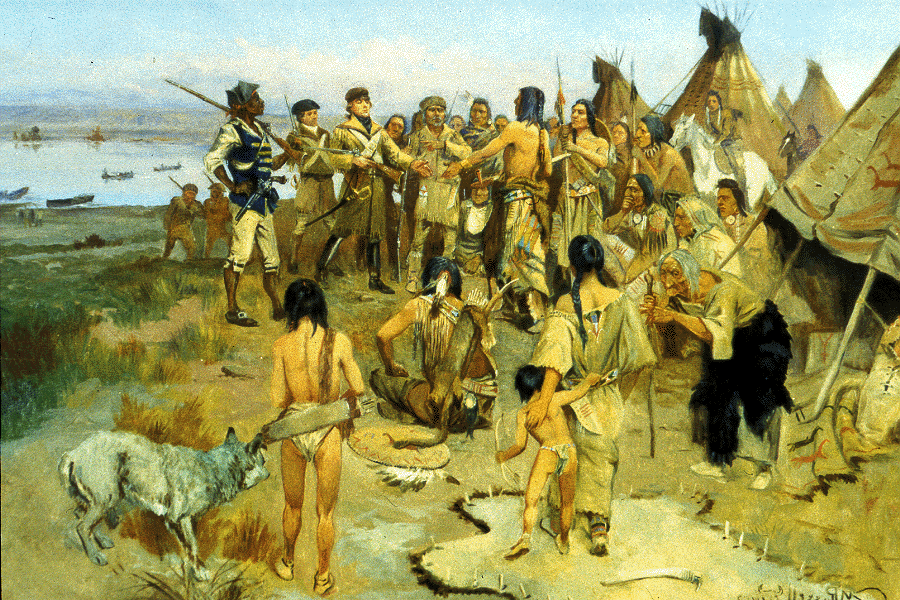
Dakota Teton Moccasins
By: Ryan Hibbs
"Pere Marquette and the Indians" by Willhelm Lamprecht.



Jesuit Missionaries such as Jacques Marquette made contact with the tribe as early as 1670 in an attempt to convert the Sioux to Christianity.

The Sioux established trade alliances with people who made social bonds with the tribe, often through intermarriage. Outsiders who were integrated into the tribe, and therefore able to participate in trade were referred to as "brother".
When you look at these Moccasins, you see Cultural Assimilation
Moccasins were standard footwear for many indigenous peoples of North America. Made of deerskin or another type of soft leather, moccasin's consists of a sole and sides that are stitched together at the top. Tops of moccasins were also typically embroidered or beaded with designs and symbols that depicted things of importance to the tribe.
These moccasins come from the Dakota Teton Sioux tribe that lived in the Northern Great Plains near present-day Pierre, South Dakota. Known as a powerful group that was hostile to outsiders, the Sioux only traded with those who had established a social connection with the tribe, such as intermarriage.
The moccasins are adorned with beads that are Blue, Green, Red, and White. Clark Wissler (1870-1947) lived among the tribe in the late 19th and early 20th century (the period in which these moccasins are from) and made note that the colors of blue and green were not native to the tribe and had been introduced to them via trade.
Jesuit Missionaries were also very active in interacting with the Sioux, establishing Missions throughout Sioux land. Given that the cross symbol didn't have one specific meaning in Sioux culture, the crosses adorning the tops of these moccasins may illustrate the integration of Christianity into Sioux culture.
